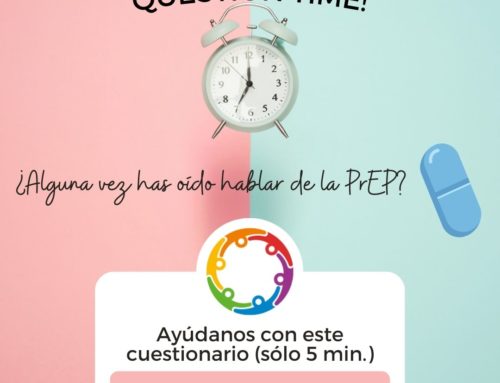What is internalised homophobia (IH)?
It is the fear, hatred or revulsion of our own homosexuality, where most of the time it is not recognised by ourselves and we externalise it in different ways during the process of accepting our sexual orientation.
How do I deal with my internalised homophobia (HI)?
In order to be able to interpret and analyse where I am in my process of acceptance and consolidation of my sexual orientation, it is necessary to know all the phases we go through regarding our sex-affective orientation.
These phases are not experienced by heterosexual people as they do not have a process of acceptance of their sexual orientation and even less a coming out of the wardrobe, as this is only experienced by people who have a sexuality that is not normative.
These phases are as follows:
- Feeling of difference, the person feels different from the rest of their peers, but does not know how to attribute this difference, they will discover this later, now they see a feeling of difference with people of the same sex.
- Denial, he/she starts to look more at the pretty boys or girls around him/her, when going to bed every day he/she has certain desires and fantasies towards people of the same sex, but he/she cannot allow it, he/she qualifies it as “this is wrong”, “let’s see if I stop thinking about it, and it will go out of my head”, it is something he/she wants to deny, he/she does not tolerate feeling attraction towards people of the same sex and wants to change his/her orientation towards heterosexuality.
- Confronting HI, homophobia or rejection, hatred of homosexuality is not only the heritage of heterosexuals but also of homosexuals themselves, as we come from the same upbringing, the same culture and society. At this stage he/she should be helped to clean the label he/she has before putting it on again, the negative charge should be removed and HI should be confronted.
- Manifestation, is the coming out of the wardrobe, until this moment, your big secret, needs to be revealed, the person needs to unburden and share it, with the best friend many times.
- Peer search, at this stage he/she will need to share experiences with other homosexuals, not only to flirt, but to talk about the process, to share experiences.
- Integration, in this stage a qualitative change is generated, as he changes the chip and internalises that his homosexuality is for life, therefore, the sooner he starts to take a series of steps, the better, if he has to tell his parents, grandparents, he does it at this stage, eliminates the double life that until now he maintained and integrates it into his daily life.
- Consolidation, until this last stage, being gay, lesbian or bisexual had been the most important thing for the person, because it had meant many sleepless nights, headaches, non-transparent communication with their parents, etc. At this stage the person is asked: If you could press a button and be heterosexual, would you press it? The answer does not imply accepting their sexual orientation, as we would cease to be who we are, and part of who we are is our sexual orientation.
Heterosexuality is no guarantee of anything, neither of being happy, nor of having a partner, so it is necessary to reflect on this, when the doubt arises, “what if I were heterosexual…”.
The rejection of homosexuality, both from the environment and often towards ourselves, originates from the education we have received from our culture and society, that is why it is important to dissociate ourselves from this education and break down myths or stereotypes that have associated homosexuality as something negative.
About HI, how to work on it through emotions and other topics we will address in the next cycles of workshops on affectivity and sexuality that will be taught in our NGO Colors Sitges Link, to learn more subscribe to our newsletter and our social networks, also visit our website to be aware of the dates.
By Javier Sotomayor C.
Workshops Sexuality and Affectivity / Sexological Guidance / Individual and Couples Sex Coaching / Resilients Men’s Circles /






